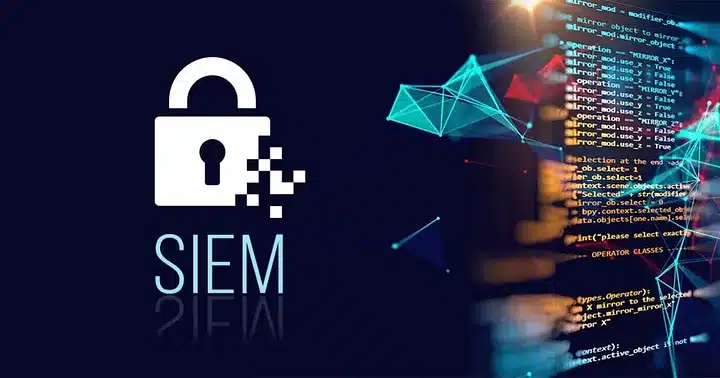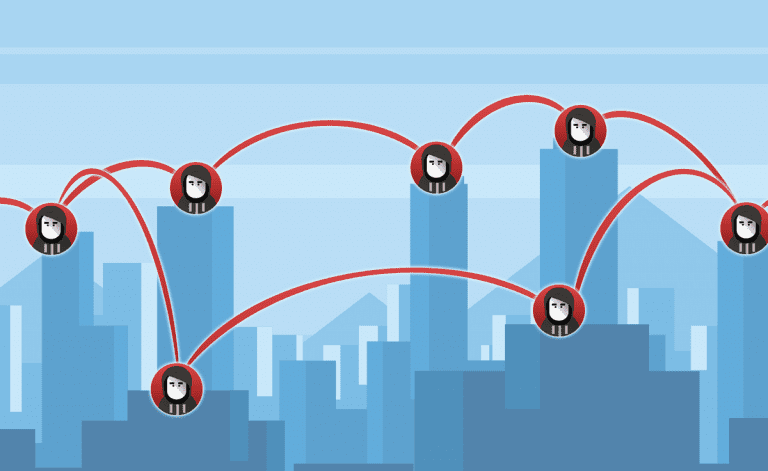Security Information and Event Management (SIEM)
Security Information and Event Management (SIEM) is a cybersecurity approach that combines two key functions: collecting and analyzing security data from across an organization’s IT infrastructure, and managing security events in real-time.
SIEM systems work by aggregating log data from various sources throughout a network – including servers, databases, applications, firewalls, antivirus software, and other security devices.
This data is then normalized, correlated, and analyzed to identify patterns that might indicate security threats or policy violations. As a leading Los Angeles cybersecurity company, we have used these in order to provide secure managed IT services to our clients.
The core capabilities of SIEM include:
- Real-time monitoring – Continuously analyzing network activity and system logs as events occur, enabling rapid detection of suspicious behavior.
- Event correlation – Connecting seemingly unrelated events across different systems to identify coordinated attacks or complex threat patterns that might otherwise go unnoticed.
- Alerting and incident response – Automatically generating alerts when potential security incidents are detected, often with severity rankings to help security teams prioritize their response.
- Compliance reporting – Generating reports required for regulatory compliance frameworks like PCI DSS, HIPAA, or SOX by maintaining detailed audit trails.
- Forensic analysis – Providing historical data and search capabilities to investigate security incidents after they occur.
Modern SIEM solutions often incorporate advanced analytics, machine learning, and threat intelligence feeds to improve their ability to detect sophisticated attacks. They serve as a centralized command center for security operations teams, helping organizations maintain visibility across their entire IT environment and respond quickly to potential threats.
Popular SIEM platforms include Splunk, IBM QRadar, ArcSight, LogRhythm, and various cloud-based solutions from major providers.
Brief History of SIEM
SIEM 1.0 (circa 2006) – Revolutionary but Limited
The first commercial SIEM products arrived around 2000, combining security event management with security information management for the first time. However, these early systems only scaled vertically, becoming I/O bound as they required increasingly powerful hardware.
At Barclays Capital, Stephen Gailey’s team achieved what was then the world’s largest SIEM deployment at 650 million events per day, but faced major challenges with data ingestion, basic dashboards, and simplistic alerting with limited correlation capabilities.
SIEM 2.0 (circa 2011) – Better Scaling, New Problems
The second generation ditched centralized databases for big data architectures, enabling horizontal scaling. This breakthrough allowed Barclays to process 2.5 billion events per day by adding lower-spec hardware without limits. SIEM 2.0 also introduced better reporting, dashboards, and the ability to query historical data over longer periods.
However, scalability became a double-edged sword. While the first generation gave security teams sight into their environments, the second generation overwhelmed them with more data than they could handle. Teams remained dependent on pre-configured alerts that correlated only a few elements, missing sophisticated threats.
SIEM 3.0 (2015-Present) – Analytics-Driven Approach
The third generation represents a radical shift focusing on operational capability rather than just technology, introducing machine learning and analytics. Instead of pre-configured alerting, SIEM 3.0 uses User and Entity Behavior Analytics (UEBA) to establish baselines for normal behavior and flag deviations as risks.
This risk-based approach helps security teams focus on actual threats rather than false alarms, addressing the final scalability problem – the operational process itself. However, implementation requires changing embedded operational processes, which can face political resistance.
Read more: A Brief History of SIEM
Key Components of SIEM
SIEM systems are built around several core components that work together to collect, process, analyze, and respond to security data across an organization’s infrastructure.
Data Collection and Aggregation
SIEM platforms gather log data and security events from diverse sources throughout the network. This includes firewalls, intrusion detection systems, antivirus software, servers, databases, applications, network devices, and endpoint systems. The system normalizes this disparate data into a common format, making it possible to analyze events from different vendors and technologies in a unified way.
Event Correlation Engine
The correlation engine serves as the analytical brain of the SIEM, identifying relationships between seemingly unrelated events across different systems and timeframes. It applies predefined rules and algorithms to detect patterns that might indicate security threats, such as multiple failed login attempts followed by successful access from an unusual location.
Real-Time Monitoring and Analysis
SIEM systems continuously monitor incoming data streams, processing events as they occur. This real-time capability enables immediate detection of security incidents, allowing organizations to respond quickly to active threats before they can cause significant damage.
Alerting and Notification System
When the correlation engine identifies potential security incidents, the alerting system generates notifications with varying priority levels. These alerts can be delivered through multiple channels including email, SMS, dashboard notifications, or integration with ticketing systems, ensuring security teams are promptly informed of critical events.
Dashboard and Visualization Interface
Interactive dashboards provide security analysts with visual representations of security data through charts, graphs, heat maps, and real-time status indicators. These interfaces make it easier to understand complex security information at a glance and identify trends or anomalies that require investigation.
Reporting and Compliance Management
SIEM platforms generate automated reports for regulatory compliance requirements such as PCI DSS, HIPAA, SOX, and GDPR. These reports provide audit trails, security metrics, and compliance status summaries that organizations need for internal governance and external regulatory requirements.
Data Storage and Retention
Centralized storage capabilities maintain historical security data for forensic analysis, compliance requirements, and trend analysis. Modern SIEM systems often use big data technologies to efficiently store and query large volumes of log data over extended periods.
Search and Investigation Tools
Advanced search capabilities allow security analysts to query historical data for incident investigation and forensic analysis. These tools support complex queries across multiple data sources and time periods, helping analysts understand the full scope of security incidents.
Integration and API Framework
SIEM platforms integrate with other security tools through APIs and connectors, enabling data sharing with threat intelligence platforms, security orchestration tools, vulnerability scanners, and incident response systems. This creates a comprehensive security ecosystem.
User and Entity Behavior Analytics (UEBA)
Modern SIEM systems incorporate machine learning algorithms to establish behavioral baselines for users and entities, detecting anomalies that might indicate insider threats, compromised accounts, or advanced persistent threats that traditional rule-based detection might miss.
These components work synergistically to provide organizations with comprehensive security visibility, enabling proactive threat detection and efficient incident response across their entire IT infrastructure.
How SIEM Works
SIEM systems operate through a multi-stage process that transforms raw security data into actionable intelligence for security teams.
Data Collection and Ingestion
The process begins with SIEM agents, connectors, and collectors gathering log data from across the organization’s IT infrastructure. These components continuously pull or receive data from sources like firewalls, servers, databases, applications, network devices, and security tools. The system handles various data formats including syslog, SNMP, Windows Event Logs, JSON, and proprietary formats from different vendors.
Data Normalization and Parsing
Once collected, the raw data undergoes normalization where the SIEM translates different log formats into a standardized schema. This process extracts key fields like timestamps, source IP addresses, user accounts, event types, and severity levels. Parsing engines break down unstructured log entries into structured data that can be analyzed consistently, regardless of the original source format.
Event Correlation and Analysis
The correlation engine applies predefined rules and algorithms to analyze the normalized data in real-time. It looks for patterns, sequences, and relationships between events that might indicate security threats. For example, it might correlate failed login attempts with successful access from unusual locations, or link network scanning activities with subsequent privilege escalation attempts. Advanced systems use machine learning to identify subtle patterns that rule-based correlation might miss.
Threat Detection and Risk Scoring
When the correlation engine identifies suspicious patterns, it evaluates the potential threat level and assigns risk scores. The system considers factors like attack sophistication, affected assets, user privileges, and historical context. This scoring helps prioritize alerts so security teams focus on the most critical threats first.
Alert Generation and Notification
For events that exceed predefined risk thresholds, the SIEM generates alerts with detailed context about the potential threat. These alerts include information about affected systems, timelines, related events, and recommended response actions. The system routes notifications through various channels based on severity levels and escalation procedures.
Dashboard Visualization and Reporting
Security analysts access SIEM data through interactive dashboards that display real-time security status, trending information, and alert summaries. The system generates automated compliance reports and security metrics, providing both operational visibility and regulatory documentation.
Investigation and Response Support
When analysts investigate alerts, the SIEM provides search and drill-down capabilities to examine related events across different timeframes and systems. This forensic capability helps analysts understand attack sequences, identify affected systems, and determine the scope of security incidents.
Continuous Learning and Tuning
Modern SIEM systems continuously refine their detection capabilities based on feedback from security analysts and emerging threat intelligence. Machine learning components adapt to organizational patterns, reducing false positives while improving detection accuracy for new attack methods.
Integration with Security Ecosystem
Throughout this process, the SIEM exchanges data with other security tools like threat intelligence platforms, vulnerability scanners, and incident response systems. This integration enriches the analysis with external context and enables automated response actions through security orchestration platforms.
Data Retention and Archival
The system maintains historical data for compliance requirements and long-term trend analysis. Advanced storage management techniques optimize performance while ensuring data availability for forensic investigations and compliance audits.
This cyclical process operates continuously, with the SIEM constantly ingesting new data, updating its analysis, and providing security teams with evolving insights into their organization’s security posture. The effectiveness depends on proper configuration, regular tuning, and integration with broader security operations workflows.
Benefits of Security Information and Event Management (SIEM)
SIEM systems provide comprehensive security advantages that strengthen an organization’s overall cybersecurity posture and operational efficiency.
Enhanced Threat Detection and Response
SIEM platforms dramatically improve an organization’s ability to identify security threats by correlating events across multiple systems that might appear benign in isolation. This holistic view enables detection of sophisticated attacks like advanced persistent threats, insider threats, and multi-stage attacks that traditional point security solutions might miss. Real-time monitoring capabilities allow security teams to respond to incidents within minutes rather than days or weeks, potentially preventing major breaches.
Centralized Security Visibility
Instead of managing dozens of separate security tools and log sources, SIEM provides a single pane of glass for monitoring the entire IT infrastructure. Security analysts can view activities across networks, endpoints, applications, and cloud environments from one unified interface, eliminating blind spots and reducing the complexity of security operations.
Regulatory Compliance and Audit Support
SIEM systems automatically generate detailed audit trails and compliance reports required by regulations like PCI DSS, HIPAA, SOX, and GDPR. This automation reduces the manual effort required for compliance activities while ensuring consistent documentation. The centralized logging and retention capabilities provide the historical data necessary for regulatory audits and internal governance requirements.
Operational Efficiency and Cost Reduction
By automating data collection, correlation, and initial analysis, SIEM systems reduce the manual workload on security teams. Automated alerting and reporting free analysts to focus on investigation and response rather than routine monitoring tasks. This efficiency becomes particularly valuable as organizations scale, allowing security teams to manage larger environments without proportional increases in staffing.
Improved Incident Investigation
When security incidents occur, SIEM platforms provide powerful forensic capabilities that help analysts quickly understand what happened, when it occurred, and what systems were affected. The ability to search and correlate historical data across multiple sources significantly reduces investigation time and improves the accuracy of incident analysis.
Risk Management and Business Intelligence
SIEM systems provide security metrics and trends that help organizations understand their risk posture and make informed decisions about security investments. Executive dashboards translate technical security data into business-relevant insights, enabling better communication between security teams and business leadership.
Threat Intelligence Integration
Modern SIEM platforms incorporate external threat intelligence feeds, providing context about known attackers, attack patterns, and indicators of compromise. This enrichment helps security teams understand whether detected activities are part of known campaigns and prioritize their response accordingly.
Scalability and Flexibility
SIEM systems can adapt to growing and changing IT environments, handling increased data volumes and new technology deployments without requiring complete architecture overhauls. Cloud-based SIEM solutions offer particular flexibility for organizations with distributed or rapidly changing infrastructures.
Proactive Security Posture
Rather than simply reacting to security incidents after they occur, SIEM enables proactive threat hunting and continuous security monitoring. Security teams can identify emerging threats, unusual patterns, and potential vulnerabilities before they result in successful attacks.
Integration with Security Ecosystem SIEM platforms serve as the central hub for security operations, integrating with other tools like vulnerability scanners, threat intelligence platforms, and incident response systems. This integration creates a more cohesive and effective security architecture.
Reduced False Positives
Advanced SIEM systems use machine learning and behavioral analytics to reduce false positives that plague traditional security tools. By understanding normal behavior patterns and applying contextual analysis, these systems help security teams focus on genuine threats rather than benign anomalies.
Business Continuity Protection
By enabling rapid threat detection and response, SIEM systems help protect business operations from disruption caused by cyberattacks. Early detection of threats like ransomware or data exfiltration attempts can prevent incidents that might otherwise result in significant business impact, financial losses, and reputational damage.
Ready to Get Started?
Let’s dive into your IT!
Schedule a free 15-minute Virtual Meeting with a Business Technology Specialist of STG Infotech and get a closer look into your IT challenges.
We will assess your current IT infrastructure and answer any questions you may have about IT Services or partnering with STG IT.




